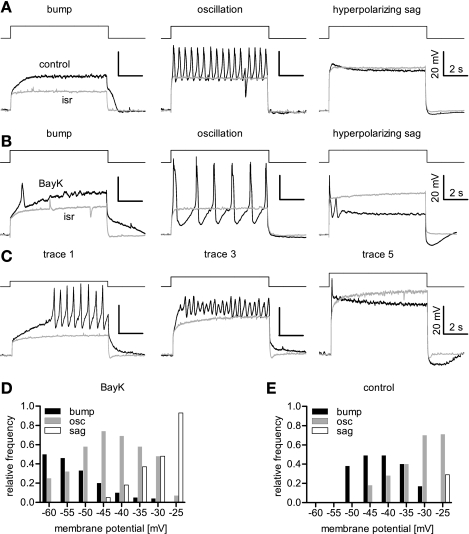Fig. 1.
L-type voltage-gated calcium channels (LTCC)-mediated voltage responses evoked by depolarizing current injections. Rectangular current pulses were applied to depolarize the neurons that were bathed in tetrodotoxin (TTX) to avoid activation of voltage-dependent Na+ (Nav) channels. A–C: three major LTCC-mediated response modes were identified in comparisons of current injection-induced depolarizations recorded in the presence of isradipine (isr) and either DMSO or BAY K 8644 (BayK). Traces recorded in the presence of DMSO or 3 μM BayK are depicted in black, those recorded in 3 μM isradipine in grey. The effect modes were termed bumps, oscillations (osc), and hyperpolarizing sags, as indicated. Out of a series of 5 current injections of increasing amplitude, the recordings shown are either from different neurons (A, B) or from a single neuron (C), albeit at different depolarization levels: a bump occurred at the smallest depolarization (trace 1 out of 5 recordings), which then turned into oscillatory activity at intermediate voltages (trace 3, but also second half of trace 1), whereas the hyperpolarizing sag was seen with the strongest level of depolarization (trace 5). Traces 2 and 4 are not shown. D and E: relative-frequency distribution of effect modes plotted against the level of depolarization (evaluated in the presence of isradipine) for BayK-induced events (D) and events occurring under control conditions (E).

